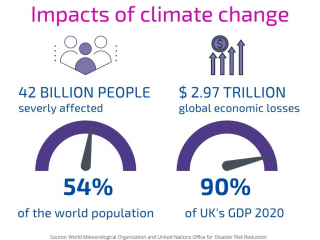Could the devastating fire that destroyed Brazil’s 200-year-old natural history museum have been prevented, or Nepal’s historic temples been saved in the 2015 Gorkha earthquake? Disaster risk management specialists believe that if adequate risk reduction and preparation measures are put in place, the negative impacts of extreme hazard events can at least be lessened, if not fully avoided.
How can institutions improve their mitigation and preparedness measures, re-engage their local community and reduce disaster risk?
Simulating Heritage Emergencies is a step-by-step instructional video that guides heritage institutions, or individuals in charge of disaster risk management planning, through how to implement risk mitigation and preparedness measures, and test them in real-time by simulating emergency scenarios at cultural heritage sites.
This video is conceived within the framework of FAR – First Aid and Resilience for Cultural Heritage in Times of Crisis – an ICCROM flagship programme that aims to reduce the risks of disasters and conflicts, as well as safeguard heritage and its associated communities. It has been produced thanks to the support of the Swedish Postcode Foundation, in close collaboration with the Estonian National Heritage Board and the Italian Civil Protection (DPC).
Why is it important to reduce risks and prepare for disasters?
Climate change is affecting weather patterns, causing a surge in extreme hazard events. Today, cyclic disaster events are known to affect over half of the world population and incur trillions of dollars in global economic losses. Usually, these estimates do not include damage to cultural heritage, which is increasingly exposed to the risk of fires, floods, earthquakes and other such catastrophic hazard events. In the face of cyclic events, the affected communities and their capacities to protect heritage have also been severely affected.
In order to address identified risks and prevent new ones, it is essential that cultural heritage institutions include mitigation and preparedness in their day-to-day functions. Simulating heritage emergencies is one way in which an institution can capture a snapshot of its existing capacities for preparedness at a given time and context. This video explains the essential components of setting up a Sim-Ex or a Simulation Exercise to simulate a heritage emergency.
The video uses clips from simulation exercises held during the ICCROM’s international course on First Aid to Cultural Heritage in Times of Crisis (FAC2019). A special thanks go to the Italian Civil Protection Department (DPC), the National Fire Corps (Corpo Nazionale dei Vigili del Fuoco - CNVVF), the Italian Red Cross, and the Carabinieri for enhancing the experience of the simulations of this unique training initiative.
Download and share it with as many people as possible so that together we can improve emergency preparedness and response and build resilience for cultural heritage worldwide.
Coming soon: A step-by-step guide for conducting Simulation and table-top exercises.
For further information, write to us at far_programme@iccrom.org.


